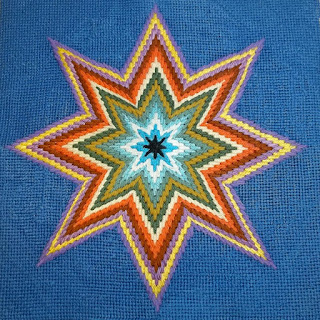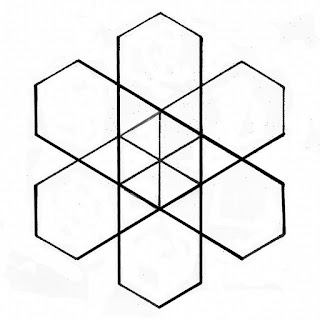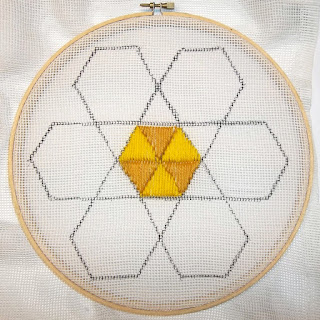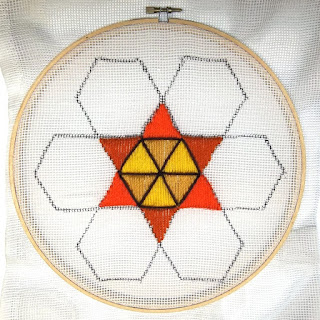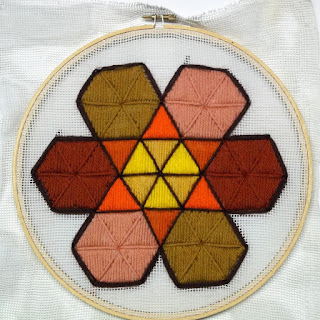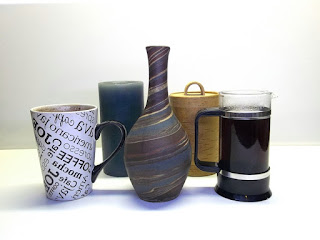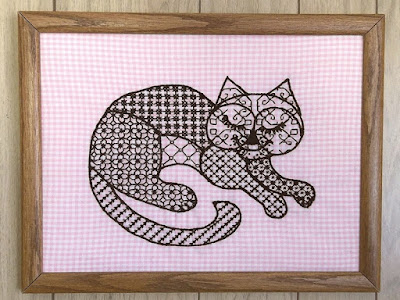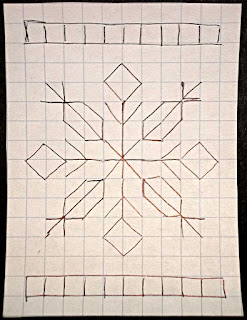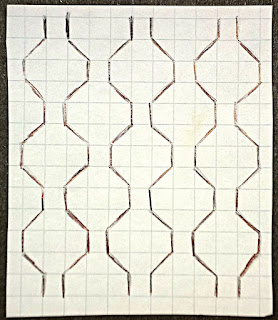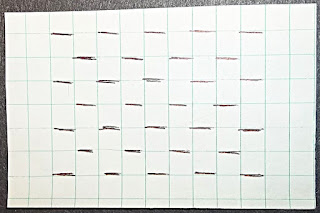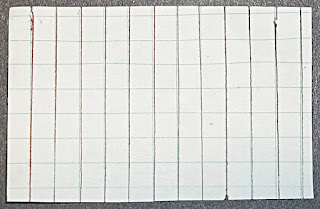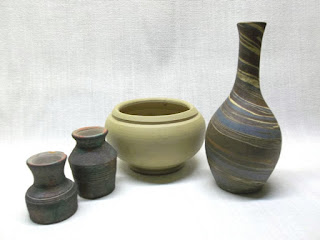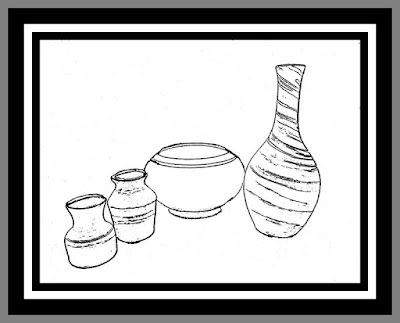| Needlepoint of a vase of roses |
After the Reformation, artists in Northern Europe and the British Isles turned primarily to secular subjects. Paintings of everyday life, sunny interior settings, and still life paintings were prominent in their work. The Dutch and Flemish masters of this period did much to popularize still lifes. In fact, the term “still life” is derived from the Dutch word “stilleven”, coined around the year 1650. At this time, still life paintings of vases of flowers became quite popular. Even today, this is probably the most popular still life subject.
It was a time of exploration and discovery. Voyages to far-flung parts of the world were organized to study and collect plants, animals, and artifacts. Many of these expeditions employed artists to paint pictures of the discoveries. A little-known fact (certainly not taught to me in my art history classes!) was that it was not unusual for the artists to be young women. A number of them became well-known, their work sought-after and published in books. Two women of note were Anna Maria Sybilla Merian of Germany and Rachel Ruach of the Netherlands.
After returning home, Ruach turned to a style of still life painting that was to see her become one of the best-known and highest-paid artists of her time, in a career that spanned seventy years! She painted vases of flowers. She used her notes and sketchbooks for reference, so that many of her compositions featured flowers that would never have been blooming in any one place at the same time. These were customarily painted against a very dark background, so that the flowers seem to glow with an inner light. This is an effect that is relatively easy to create in needlepoint because you complete the colored design first in whatever canvas stitches you choose and then fill in the background with black tent stitches. You can see this effect in this “needle painting”.
Doing embroidery of other kinds on on black or very dark backgrounds., however, creates some additional problems. Embroidering on a very dark background can be a challenge. The first problem is to transfer your sketch or pattern to the fabric in such a way that it is plain enough for you to follow. I was taught to do this by placing dress-maker's carbon in white or yellow face down on the fabric and going over the lines from the back with a tracing wheel — a device that looked somewhat like a cowboy's spur on a handle. There are two problems with that. First, both the carbon and the wheel are hard to find today. Second, the little dots made by the points of the wheel tend to smear or disappear from use before you finish the project. I recommend securing the fabric to a hard surface and tracing solid lines and shapes with a ball-point pen that has used all its ink. Substitutes for the carbon (although inferior to it) can be made by applying a heavy layer of chalk, white crayon, or white grease pencil to tracing paper — after you have drawn the design on the other side of the paper.
If you are working on a light-colored fabric, you can use a commercial iron-on transfer (following the directions on the envelope) or make your own hot-iron transfer (see the post for May 12, 2016). For dark-colored fabrics, I usually draw my design on thin tissue paper and pin it to the back of the dark-colored fabric I plan to embroider. Then I back-stitch along the pattern lines with white thread, floss, or yarn, depending on which one I plan to use in the embroidery itself. This gives me an easy-to-follow outline on the right side of the fabric. I remove the tissue paper by pulling the tissue pieces away gently with tweezers and then discard the pieces. The white stitches can be removed from the finished embroidery later if you like; but I usually just work over them to hide them. These next photographs show steps in the process.
When I begin thinking about a design, I make several simple sketches to help me work out my ideas. This one was for a flowering plant in a terra cotta pot. (There are many plants — some of them flowering — in terra cotta pots in our greenhouse, but this one is purely imaginary.) I had decided that the light would be coming from slightly above and to the side of the arrangement, but I had not decided which side, so I left highlights on both sides of the pot and left the shadows cast by pot and flowers very vague. The shapes of flowers and leaves are very general; however, I have indicated interior shadows where leaves and flowers overlap. This particular project has never been made, but I kept the sketches in case they might be useful some day. Today is that day.
There will be interior and exterior shadows in your composition, too. Those shadows, while darker than the blossoms, will be lighter than the background. Nor will they be a colorless gray. Shadows have some color in them and that color is the complement of the color of the object that cast the shadow. For example, a blue vase will cast a shadow which contains a tinge of orange. (And a terra cotta pot is is a red-orange, so it will cast blue-green shadows, even on a blue tablecloth.) Using this fact will make your compositions livelier and more realistic. Common pairs of complementary colors are: red/green, red-orange/blue green, orange/blue, yellow-orange/ blue-violet, yellow/violet, and yellow-green/red-violet.
Now I'm going to give you an outline of a bouquet of flowers that you can download. You can experiment with it. The flower shapes and interior shadows are merely suggestions; you make your own choices. The flowers are simple enough that you can treat them all as the same kind of flower or as a mixed bouquet. They could all be done as shades of the same color or as many different colors. Remember that your background will be black or a very dark color, so that light or bright colors will show up best against it. Highlights are a little more subtle than shadows. They are easiest to show as light — even white — reflections on a shiny surface like a ceramic vase or highly polished wood. One on a small cluster of flowers in a group indicates where light strikes most directly.
This outline is based on an actual basket of silk flowers that J.D. picked up around the house. We are not going to show the “model” at this time, because we don't want it to influence your decisions or choices. We will show it at some future date, so you can compare it with your composition.
Play with your composition. What kind of texture does the basket have? Remember the texture that the basket of strawberries had in the post for August 31, 2017? Where on the basket will shadows appear? What kind of shadow will the basket itself cast on the table top or tablecloth? Would you prefer to have the flowers in a terra cotta pot instead of a basket? (Refer to the sketch above.) Would you prefer to change the basket to a vase? If so, what kind of shape and texture or pattern would it have? Do you want to add another object to the table (perhaps one of the kinds of fruit you experimented with in Part II)? Once you are happy with your composition, how will you construct it? Will you use counted cross-stitch or tapestry stitches? Will you use crewel embroidery? Will you cut the pieces from fabric and sew them or glue them to the background? Will you use a combination of these techniques? Will your picture be realistic, impressionistic, or abstract?
At one time, not too long ago, there were generally accepted rules for painting still life pictures. There were to be several objects on a table in front of a fairly dark background that wasn't very important to the picture. There was a very shallow depth of field. Textures were often more important than colors. The viewers eyes were supposed to be drawn upward and diagonally across the picture, usually to the right-hand side. It is easy to imagine just how dull and uninteresting many of the compositions painted according to the rules must have been. Aren't we lucky that artists and crafts-people today are not expected to follow those rules?
Learn from your experiments and produce a composition that makes you proud.
 This post by Annake's Garden is licensed under a Creative Commons Attribution-NonCommercial-ShareAlike 3.0 Unported License.
This post by Annake's Garden is licensed under a Creative Commons Attribution-NonCommercial-ShareAlike 3.0 Unported License.
